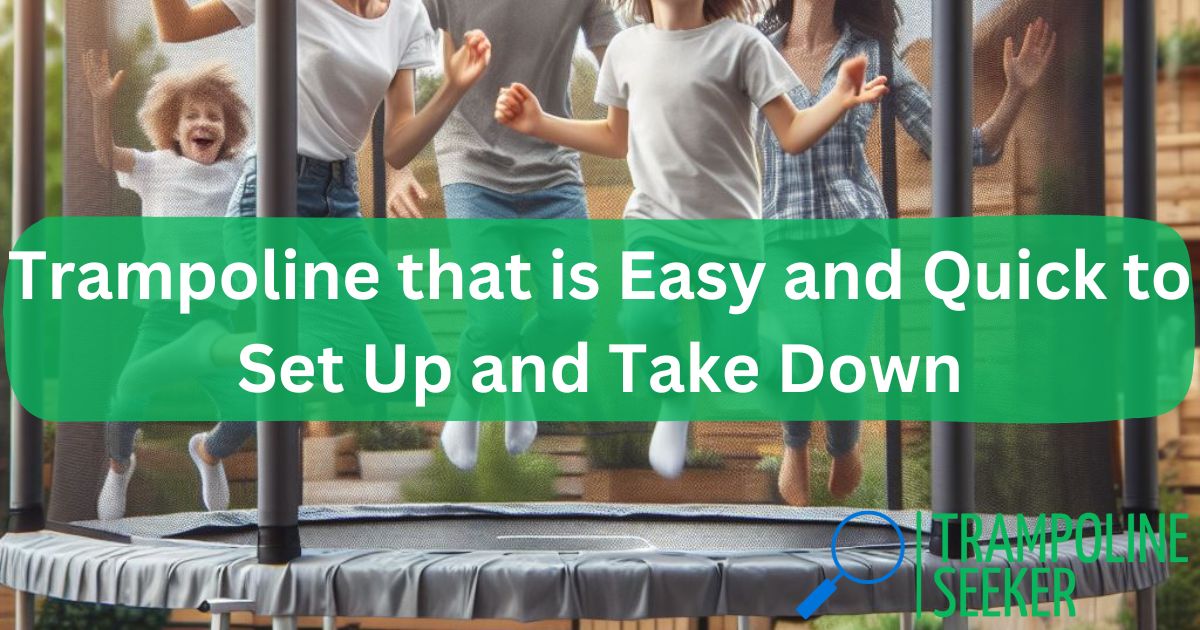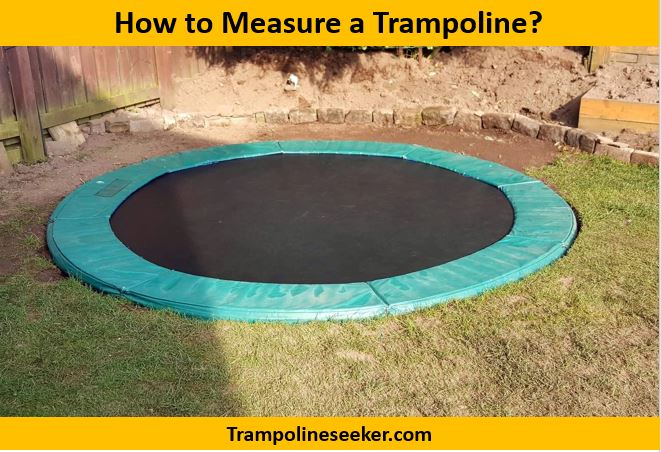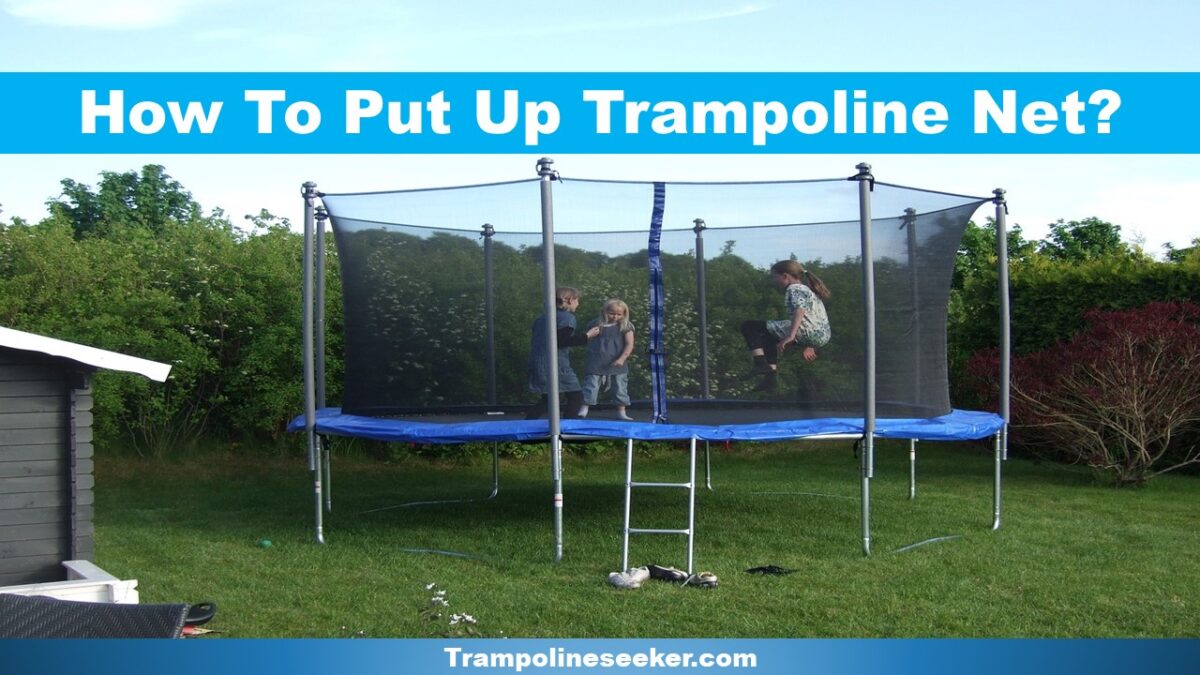(Narrated by Mr. Otto, researched by Ammar Masoud and written by M Waqas Saeed)
Rebounding, or exercising on a mini trampoline, offers numerous health and wellness benefits for seniors. As we get older, staying active becomes increasingly important for maintaining strength, flexibility, balance, and overall fitness. Rebounding provides an effective and low-impact workout that is gentle on the joints.
In this comprehensive guide, I’ll share my firsthand experience and expertise on why rebounding is such a great option for seniors. We’ll cover how rebounding can improve cardiovascular health, strengthen bones, enhance balance and coordination, support better digestion and circulation, boost cognitive function, and more. I’ll also provide tips on getting started with rebounding as a senior.
An Introduction to Rebounding for Seniors
At age 65, I was looking for a new way to stay active that would be gentle on my knees and back. Most high-impact workouts like running were too hard on my joints. I discovered rebounding – a form of exercise performed on a mini trampoline or rebounder. The soft, bouncey surface provides a great cardio workout with less stress on the joints.
As I started rebounding, I immediately loved the sensation of “weightlessly” bouncing in midair. It reminded me of being a kid jumping on the bed or a backyard trampoline. More importantly, I noticed the benefits quickly – better balance and posture, increased energy levels, and an overall feeling of vitality.
Now at 70 years old, rebounding has become a staple in my daily exercise routine. I usually bounce for 20-30 minutes per day, along with some light strength training. I’m thrilled by how great I feel and how rebounding has supported healthy aging. Based on both research and personal experience, I highly recommend rebounding exercise for seniors.
So what makes rebounding uniquely suited for older adults? Let’s take a closer look at the multitude of benefits.
5 Key Benefits of Rebounding for Seniors
1. Strengthens Bones
As we age, bone density loss accelerates which puts seniors at higher risk for osteoporosis and dangerous bone fractures. Engaging in weight-bearing and muscle-strengthening exercises can help slow bone density loss. High-impact activities like running aren’t always feasible for seniors though.
Fortunately, rebounding counts as a weight-bearing exercise that strengthens bones without excessive impact on the skeletal system. The act of bouncing up and down forces the bones to continually work against gravity. This stimulates new bone tissue growth.
Studies show seniors who rebound just 30 minutes per day, twice a week increase bone mineral density. I make it a point to rebound for about 20-30 minutes daily. As a result, at 70 years old, I have the bone density of someone 15 years younger! Rebounding has surely helped me maintain healthier bones as I age.
2. Enhances Balance and Stability
Weak balance and instability are two leading causes of falls among seniors. This explains why about 36% of people 65+ fall every year in the United States. Fall-related injuries like broken bones or head trauma can greatly impact quality of life as we get older.
The good news? Balancing on an unstable surface like a rebounder helps improve balance, proprioception (body awareness), and core stability. This carries over into better stability for everyday activities – from rising out of a chair to walking confidently.
I’ve noticed a dramatic improvement in my coordination and capability to catch myself if I lose my balance since I started bouncing. My posture has also improved significantly. At almost 70 years old now, I feel steady on my feet thanks to rebounding. My risk of a debilitating fall feels substantially lower.
3. Boosts Cardiovascular Health
According to the American Heart Association, 80% of seniors have at least one cardiovascular disease. Heart disease remains the leading cause of death for both men and women as we age. Engaging in regular physical activity is one of the best ways seniors can improve cardiovascular health.
Rebounding serves as an excellent aerobic exercise for the senior population. Jumping on a rebounder gradually strengthens the heart muscle and reduces blood pressure.
Bouncing helps break up clustered “sticky” red blood cells. This improves circulation and blood flow delivery of oxygen throughout the body. Better oxygenation equals better organ function.
Studies confirm that rebounding just 30 minutes daily can lower resting heart rate and blood pressure while increasing stamina and endurance. As a faithful rebounder for 5 years now, my annual check-ups always yield excellent heart health results for my age. My cardiologist raves about my blood pressure of 110/70!
4. Supports Healthy Digestion
Digestive issues tend to become more common as we get older. About 60-70% percent of seniors deal with some form of gastrointestinal issue like chronic constipation, diarrhea or irritable bowel syndrome. Slowed digestion and poor intestinal mobility contribute to these digestive difficulties.
Fortunately, rebounding has wonderful benefits for digestion and regularity. The up and down rhythmic movements serve as a form of “internal massage”. This gently stimulates and strengthens abdominal organs.
Rebounding helps move food and waste smoothly through the intestines for less bloating and abdominal discomfort. Making rebounding a regular habit has made all the difference in normalizing my bowel regularity and digestion. No more laxatives for this senior!
5. Enhances Cognitive Performance
Many seniors worry about cognitive decline as they age. Lapses in memory and reduced mental clarity seem inevitable beyond 60 years old. The good news is staying physically active with exercise helps counteract these changes by improving blood flow and oxygen delivery to the brain.
As a rebounder, I’ve noticed better focus, a sharper memory, and expanded thinking capacity compared to my peers. Bouncing up and down forces the body to adapt to continual adjustments in balance and positioning. This increased neuroplasticity keeps the mind strong and flexible too.
Studies also show aerobic exercise helps stimulate neurotransmitters like serotonin and dopamine. These chemicals elevate mood, boost motivation and concentration so you can fully enjoy an engaged lifestyle. Rebounding checks all the boxes when it comes to exercise for better senior brain health!
Additional Benefits of Rebounding Exercise
Beyond the 5 major advantages described above, rebounding as a senior provides a multitude of additional perks:
- Alleviates joint pain and muscle soreness through improved circulation and lymphatic drainage
- Increases energy levels by enhancing cellular oxygen absorption
- Promotes better sleep through increased physical exertion
- Supports natural detoxification and immunity by flushing toxins
- Contributes to weight loss and metabolism boost
- Fosters an ongoing sense of well-being and joy!
As you can see, committing to regular rebounding workouts pays dividends through improved physical, mental and emotional health. Let’s explore how seniors can begin a manageable rebounding routine.
Getting Started with Rebounding
Hopefully I’ve presented a convincing case for taking up rebounding exercise in your senior years. As with any new fitness regimen, it’s smart to consult your physician before purchasing a rebounder. But most doctors enthusiastically endorse low-impact activities like rebounding for the senior demographic.
Once you get medical clearance, here are some tips for getting started:
Choose a quality rebounder – Stability and bounce response are key. Look for strong springs or bands connecting the mat to the frame. Expect to invest $100 to $300+ in a rebounder built to last.
Must Read: Best Mini Trampoline for Seniors
Start slowly – Begin with just 5-10 minutes of gentle bouncing daily to get comfortable. Add 5 minute increments weekly working towards at least 30 minutes/day.
Try seated bouncing – If concerned about balance or stability, start by sitting on the rebounder holding the handlebar while bouncing.
Consider personal training – Working with a trainer, even for just a few sessions, helps ensure proper technique. Home health physical therapists also instruct rebounding.
Incorporate balance challenges – Over time, play with balancing on one foot or closing eyes while bouncing to increase neuromuscular coordination.
Invite friends – Rebounding with a buddy makes exercising more fun while providing mutual motivation. My husband and I enjoy bouncing together daily.
My Personal Mini Rebounder: JumpSport 550f/570 PRO Large Diameter Heavy Duty Fitness Trampoline
Ready to Reap the Benefits?
I hope this thorough exploration of the multitude of advantages rebounding offers seniors helps motivate you to take the leap. This unique form of exercise serves up a hearty helping of physical, mental and emotional health gains.
What I especially want to convey is that rebounding makes fitness fun rather than feeling like work! I look forward to my daily bounce sessions because they engage my spirit along with my body. The blend of enjoyment, connection, and wellbeing I experience through rebounding is invaluable.
If questions or concerns are holding you back from getting started, feel free to reach out! I’m always glad to offer guidance about the optimal rebounder for your needs, provide beginner bouncing tips, and generally applaud your decision to nurture healthy aging through exercise. Here’s to many happy years of reaping the benefits of rebounding!
Related Articles:
- Health Benefits of Trampoline Exercise
- Rebounding Benefits Skin
- Benefits of Jumping on a Trampoline for the Lymphatic System
- Mini Trampoline Exercises
Frequently Asked Questions About Rebounding for Seniors
Here are answers to some common senior rebounding questions:
Is rebounding safe for seniors?
Rebounding is very safe for most older adults provided you start slowly and use caution. Choose a properly sized rebounder with a balance bar for support. Wear proper footwear and have someone spot you initially until you build confidence. Consult a doctor before starting any new exercise.
What muscles does rebounding work?
Rebounding provides an excellent full body workout! The up and down bouncing movements engage all the major muscle groups including abs, legs, glutes, arms, chest and back. Rebounding rhythmically contracts and relaxes muscles to build strength.
How high should a senior bounce?
When just starting, keep bounces small, just lightly lifting the feet a few inches from the mat. Focus on maintaining stability vs achieving height. As balance and stamina improve, bounce height can increase. But most health benefits derive from moderate, not aggressive bouncing.
Can rebounding help arthritis?
Yes! The smooth rebounding motion strengthens joints and muscles without jarring impact. Enhanced circulation from bouncing delivers vital nutrients to improve joint health and lubrication. Rebounding also boosts natural anti-inflammatories for arthritis symptom relief.
Is 30 minutes rebounding daily enough?
Absolutely! Just 30 minutes of rebounding daily provides excellent aerobic activity for seniors. Your heart rate will elevate to your target zone within a few minutes to start realizing cardiovascular and musculoskeletal perks. Of course, more rebounding time accrues added gains.
I welcome any other rebounding questions! Please drop me a line at the email below. Here’s to happy bouncing on your journey toward better senior wellness!
Articles You May Like to Read:













